Benefits of Choosing the Best Solar Inverter for Your Home
Choosing the right solar inverter for your home can make a huge difference in how efficiently your solar energy system operates. A good inverter not only converts the energy produced by your solar panels into usable electricity but also enhances the overall performance of your system. With so many options out there, it’s important to understand the benefits of selecting the best solar inverter for your needs. Here’s a look at some of the top advantages you can expect.
Key Takeaways for Solar Inverter
- A high-quality solar inverter maximizes energy efficiency, ensuring minimal energy loss during conversion.
- Investing in the right inverter can lead to long-term savings on electricity bills and potential income through net metering.
- Durability and reliability are key factors; a good inverter can withstand various weather conditions and last for years.
- Advanced monitoring features help you track energy production and consumption easily, making it simpler to manage your system.
- Inverters that integrate with smart home systems offer added convenience and control over your energy usage.
1. Maximizing Energy Efficiency
When you’re thinking about going solar, one of the biggest things on your mind is probably how much energy you can actually get from those panels. That’s where the inverter comes in. A good solar inverter is key to making sure you’re squeezing every last drop of power out of your solar panels. It’s not just about converting DC to AC; it’s about doing it efficiently.
Think of it like this: you’ve got a garden hose (your solar panels) pumping water (DC electricity) into a tank (your home’s electrical system). The inverter is the connector that makes sure you’re not losing water along the way. The better the connector, the less water you waste. A high-quality inverter minimizes energy loss during this conversion process, ensuring more of the sun’s energy ends up powering your home.
Here’s why it matters:
- Higher energy yield: A more efficient inverter means more usable electricity from the same amount of sunlight. This directly translates to lower electricity bills.
- Faster ROI: Because you’re getting more out of your system, you’ll see a return on your investment sooner. The more efficient your system, the quicker it pays for itself.
- Environmental impact: By maximizing energy efficiency, you’re reducing your reliance on the grid and lowering your carbon footprint. It’s a win-win for your wallet and the planet.
Choosing the Right Inverter Matters
Choosing the right inverter is not a set-it-and-forget-it decision. It’s about understanding your energy needs, your system’s capabilities, and how to get the most out of your solar investment. It’s about making sure you’re not just generating power, but using it wisely.
Consider different types of inverters. For example, SLENERGY offers advanced inverters designed to enhance efficiency in these systems. The type of inverter you choose can significantly impact how well your system performs. It’s worth doing your homework to find the best fit for your specific situation.
2. Long-Term Savings
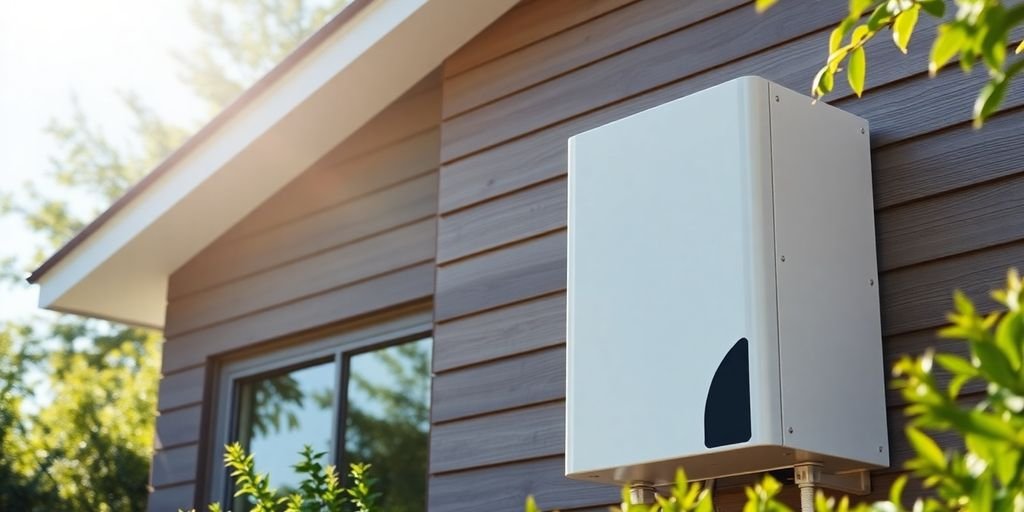
Switching to solar power with the right inverter isn’t just about being green; it’s also about saving money over the long haul. A good inverter can significantly impact how much you save, making it a smart financial move.
- Reduced Electricity Bills
- Increased Home Value
- Government Incentives and Rebates
One of the most immediate benefits is the drop in your monthly electricity bill. By generating your own power, you rely less on the grid, which means lower payments to the utility company. The savings can be substantial, especially in areas with high electricity rates.
Choosing the right inverter is a big deal. It’s not just about getting the cheapest option; it’s about finding one that will last, perform well, and ultimately save you money in the long run. Think of it as an investment in your home and your future.
Another way you save is through increased home value. Homes with solar panels are often more attractive to buyers, and a high-quality inverter is a selling point. It shows that the system is well-maintained and efficient. Plus, many states and the federal government offer incentives and rebates for going solar, further reducing your initial investment and boosting your long-term savings. It’s a win-win situation.
3. Reliability and Durability
Let’s be real, nobody wants to replace their solar inverter every few years. That’s why reliability and durability are super important. You want an inverter that can handle whatever Mother Nature throws at it and keeps chugging along for the long haul. A robust inverter translates to fewer headaches and more consistent energy production.
Think about it: a cheap inverter might save you some money upfront, but if it fails prematurely, you’re looking at replacement costs, labor fees, and lost energy savings. Investing in a quality inverter from the start can save you a lot of trouble down the road. Plus, a durable inverter is more likely to maintain its efficiency over time, meaning you’ll get more out of your solar panels for longer.
Here’s what I’d look for in a reliable inverter:
- Solid warranty (5 years minimum, ideally 10+)
- Good track record from other users (check reviews!)
- Built with quality components (ask about this specifically)
Choosing a reliable and durable solar inverter is a long-term investment in your home’s energy future. It’s about more than just saving money today; it’s about ensuring consistent performance and peace of mind for years to come. Don’t skimp on quality – it’ll pay off in the end.
NREL does research on PV reliability and system performance.
4. Advanced Monitoring Features
Modern solar inverters do way more than just convert DC to AC. They come with some seriously cool monitoring features that can help you keep tabs on your system’s performance. It’s like having a personal solar power dashboard right at your fingertips.
- Real-Time Performance Tracking: See exactly how much energy your system is producing at any given moment. No more guessing games!
- Historical Data Analysis: Dig into past performance to spot trends and optimize your energy usage.
- Remote Monitoring: Check your system from anywhere using a smartphone app or web portal. Super convenient when you’re away from home.
- Alerts and Notifications: Get notified immediately if there’s a problem, like a drop in production or a system error. This helps you address issues quickly and avoid bigger problems down the road.
I remember when I first got my solar panels installed, I was constantly checking the inverter’s display. Now, with the app, I can see everything on my phone. It’s so much easier to keep an eye on things and make sure everything is running smoothly.
These monitoring features not only give you peace of mind but also help you maximize your investment in solar energy. By staying informed about your system’s performance, you can make smart decisions about energy consumption and maintenance.
5. Integration with Smart Home Systems
Integrating your solar inverter with your smart home setup can really streamline your energy use. It’s like having a central hub for all things energy-related in your house. You can control and monitor your solar power alongside other smart devices, making everything more efficient and convenient. It’s not just about saving energy; it’s about making your life easier and more connected.
- Centralized Control: Manage your solar inverter and other smart devices from a single app.
- Automated Energy Usage: Set up rules to automatically use solar power when it’s available.
- Real-Time Monitoring: Keep an eye on your energy production and consumption from anywhere.
Imagine being able to adjust your thermostat based on how much solar energy you’re generating at any given moment. That’s the kind of control and efficiency you get with smart home integration. It’s about making your home work for you, not the other way around.
With the right setup, you can even use your smart home system to optimize energy usage based on weather forecasts. If a sunny day is predicted, your system can pre-cool your home or charge your electric vehicle, all using clean, renewable energy. This level of automation not only saves you money but also reduces your carbon footprint. Plus, it’s just plain cool to see your home working in harmony with the environment. You can also look into hybrid inverters for better energy management.
6. Enhanced Safety Mechanisms
When you’re dealing with electricity, safety is a big deal. Solar inverters have come a long way, and the good ones are packed with features to keep you, your home, and the grid safe. It’s not just about generating power; it’s about doing it safely.
- Ground Fault Protection: These systems watch for electrical current straying from its intended path. If something goes wrong, like a short circuit, the inverter shuts down to prevent fires or further damage. It’s like a circuit breaker, but smarter.
- Overvoltage Protection: Lightning strikes or grid fluctuations can send voltage spikes through your system. Overvoltage protection kicks in to protect the inverter by disconnecting it from the grid or panels. This keeps everything from frying.
- Arc Fault Detection: Arc faults are basically unintended electrical discharges that can start fires, especially where wiring is exposed. Many inverters now include A1 Powered Active Arcing Protection that can detect and stop these arcs, reducing the risk of fire. It’s a must-have for peace of mind.
- Automatic Shutdown: During a power outage, the inverter automatically disconnects from the grid. This prevents electricity from feeding back into the grid, which could be dangerous for utility workers. It also protects the inverter from damage when the power comes back on.
- Overheating Protection: Inverters can get hot, and too much heat can damage the components inside. Overheating protection will shut down the inverter if it gets too hot, preventing any serious damage.
Choosing an inverter with robust safety features is a smart move. It’s an investment in protecting your home and family, and it can also help you avoid costly repairs down the road. Don’t skimp on safety when it comes to your solar system.
Why Comprehensive Protection Matters
Modern inverters are designed with multiple layers of protection. It’s not just one thing; it’s a combination of features working together to keep your system safe and reliable. Plus, many inverters come with warranties and support, so you can be sure you’re covered if something does go wrong.
7. Flexibility for Future Expansion
Planning for the future is smart, especially when it comes to solar energy. A good solar inverter should allow you to easily expand your system as your energy needs grow. Maybe you’ll get an electric car, or your family will expand. Whatever the reason, you don’t want to be stuck with an inverter that can’t handle more panels.
- Scalability is key. Look for inverters that can accommodate additional solar panels without needing a complete system overhaul.
- Consider modular designs. These let you add capacity in smaller increments, matching your actual needs.
- Check the inverter’s maximum input voltage and current ratings to ensure it can handle future expansions.
Choosing an inverter with expansion capabilities ensures that your initial investment remains relevant and useful for years to come. It’s about future-proofing your solar setup and avoiding costly replacements down the line. Think of it as building a solid foundation for your energy needs, one that can grow with you.
It’s also worth thinking about how your inverter will integrate with other potential upgrades, like battery storage. Some inverters are designed to work seamlessly with batteries, while others might require additional equipment or modifications. Planning ahead can save you headaches and money in the long run. For example, innovative housing solutions are emerging as sustainable options for off-grid living.
8. Compatibility with Battery Storage
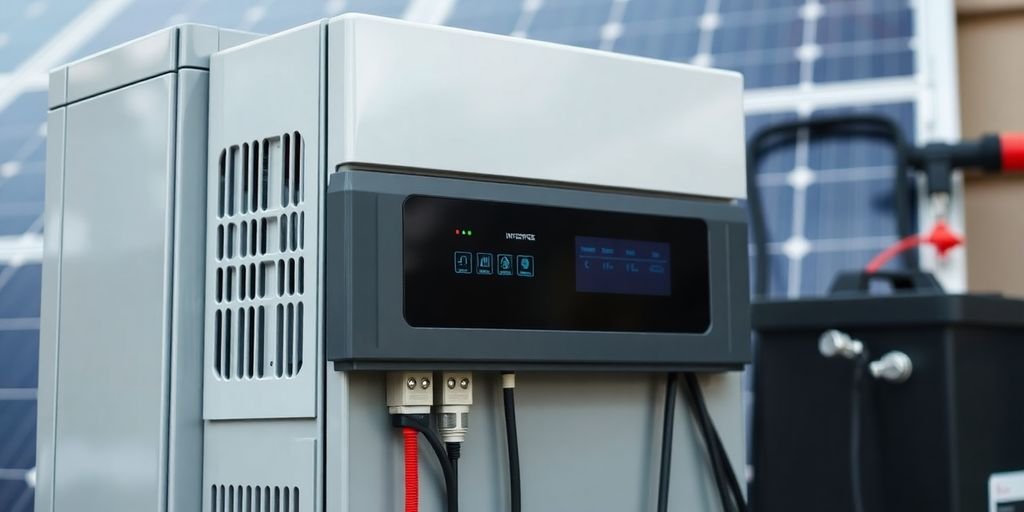
One of the coolest things about choosing the right solar inverter is how well it can play with battery storage systems. If you’re thinking about adding batteries to your solar setup, picking an inverter that’s designed for it is super important. It’s not just about having power when the sun isn’t shining; it’s about creating a more resilient and efficient energy system for your home.
A compatible inverter ensures seamless integration, maximizing the benefits of both solar and battery technologies.
Think of it like this: you wouldn’t try to plug a European appliance into an American outlet without an adapter, right? Same deal here. A mismatched inverter and battery can lead to all sorts of problems, from reduced efficiency to outright incompatibility.
Here’s why compatibility matters:
- Efficiency: A compatible inverter is designed to work optimally with batteries, minimizing energy loss during charging and discharging.
- Reliability: Proper integration reduces the risk of system failures and extends the lifespan of your batteries.
- Control: You gain better control over your energy usage, allowing you to store excess solar power and use it when you need it most.
Choosing an inverter that’s specifically designed for battery storage is a smart move. It simplifies the installation process, improves system performance, and gives you peace of mind knowing that your solar and battery systems are working together harmoniously.
For example, a hybrid inverter combines the functions of a solar inverter and a battery inverter into a single unit. This can lead to lower initial costs and high system efficiency. If you’re planning for immediate battery storage integration, a hybrid inverter is the way to go.
9. Cost-Effectiveness
Let’s be real, solar inverters are an investment, and you want the most for your money. It’s not just about the sticker price; it’s about the long game. A cheaper inverter might seem appealing upfront, but if it fails early or isn’t very efficient, you’ll end up paying more in the long run. Choosing the right inverter balances initial cost with long-term performance and savings.
- Consider the lifespan of the inverter.
- Factor in potential maintenance costs.
- Evaluate the energy production efficiency.
It’s tempting to go for the cheapest option, but remember that a slightly more expensive, high-quality inverter can save you money over time by maximizing energy production and minimizing downtime. Think of it as an investment in your home’s energy future.
For example, a solar panel system with a string inverter might be cheaper initially for a simple roof setup. But if you have shading issues, microinverters, though pricier, could generate more power and pay for themselves over time. It’s all about finding that sweet spot.
10. User-Friendly Interfaces
Let’s be real, nobody wants to wrestle with complicated tech just to see how their solar panels are doing. That’s where user-friendly interfaces come in. A good solar inverter should have an interface that’s easy to understand and use, even if you’re not a tech whiz. Think clear displays, simple menus, and intuitive controls. It’s all about making solar energy management accessible to everyone.
With a well-designed interface, you can quickly check your system’s performance, see how much energy you’re generating, and make any necessary adjustments without pulling your hair out. Ease of use is key here.
A user-friendly interface isn’t just a nice-to-have; it’s a must-have. It simplifies the entire solar energy experience, making it more enjoyable and less intimidating for homeowners.
Here’s what to look for in a user-friendly solar inverter interface:
- Clear and easy-to-read display
- Simple navigation menus
- Intuitive controls
- Mobile app integration
- Real-time data monitoring
11. Performance in Various Weather Conditions
Solar inverters need to be tough. They’re outside all the time, dealing with everything from scorching sun to freezing rain. The best ones are designed to handle these extremes without losing their efficiency or breaking down. This reliability is key to getting the most out of your solar investment.
Think about it: if your inverter can’t handle the heat, it might shut down during the hottest part of the day, right when your solar panels are producing the most energy. Or, if it’s not waterproof, a heavy rain could cause serious damage. That’s why it’s important to choose an inverter that’s built to last, no matter what the weather throws at it.
Investing in a high-quality inverter that can withstand diverse weather conditions ensures consistent energy production and protects your investment over the long term. It’s about getting reliable performance, day in and day out, regardless of the forecast.
Here are some things to consider:
- Temperature Range: Look for an inverter with a wide operating temperature range. This means it can function efficiently in both hot and cold weather.
- Water Resistance: Make sure the inverter is properly sealed and protected from rain and snow. An IP65 rating or higher is a good sign.
- Corrosion Resistance: If you live near the ocean, salt air can corrode metal components. Choose an inverter with a corrosion-resistant coating.
Consider how solar battery storage can help you store energy during peak production times, ensuring you have power even when weather conditions aren’t ideal.
12. Reduced Energy Losses
One of the biggest advantages of a good solar inverter is its ability to minimize energy waste. Energy losses can occur during the conversion process, but a high-quality inverter is designed to keep these losses to a minimum. This means more of the energy your solar panels generate actually makes it to your appliances, lights, and other electrical devices.
Think of it like this:
- Less energy lost means more usable power.
- Efficient inverters help you get the most out of your solar investment.
- Reduced losses contribute to a faster return on investment.
Choosing the right inverter is like picking the right tool for a job. A well-suited inverter ensures that the solar energy harvested is efficiently converted and utilized, minimizing any potential waste and maximizing the overall output of your solar system. It’s about making every ray of sunshine count.
Power isn’t the only goal—it’s about maximizing every bit of energy you generate.A good inverter makes sure you’re not throwing away valuable energy. This is especially important if you’re looking to maximize your solar energy utilization and reduce your reliance on the grid.
13. Support for Net Metering
Net metering is a game-changer when it comes to solar energy. It basically lets you send excess electricity back to the grid, and in return, you get credits on your electricity bill. It’s like the power company is your battery, storing your extra energy for later use. This can significantly reduce your energy costs and even lead to a zero dollar bill some months. Choosing the right solar inverter is key to making the most of net metering programs.
Net metering policies vary by location, so it’s important to check with your local utility company to understand the specific rules and regulations in your area. Some utilities offer full retail credit for excess energy, while others offer a lower rate. Understanding these details will help you maximize your savings.
Here’s why a good inverter matters for net metering:
- Accurate Measurement: A high-quality inverter accurately measures the amount of energy you’re sending back to the grid, ensuring you get the correct credits.
- Grid Compliance: The inverter needs to meet the grid’s standards to safely and reliably send power back. Residential storage solution is a must.
- Remote Monitoring: Some inverters come with monitoring systems that let you track how much energy you’re exporting, so you can keep an eye on your net metering credits.
Net metering can significantly reduce your energy costs.
Think of it this way: you’re not just generating power for yourself; you’re also helping the community and getting paid for it. It’s a win-win!
14. Improved System Performance
Choosing the right solar inverter isn’t just about converting DC to AC; it’s about optimizing your entire solar system for peak performance. A quality inverter acts as the brain of your system, ensuring every component works together efficiently. Let’s face it, you want to get the most bang for your buck, and a good inverter is key to that.
- Better Energy Yield: A high-performing inverter maximizes the amount of usable energy you get from your solar panels.
- Reduced Downtime: Reliable inverters minimize system interruptions, keeping your energy production consistent.
- Optimized Panel Performance: Advanced inverters can address issues like shading, ensuring each panel operates at its best.
A well-chosen inverter can significantly boost your solar system’s overall output. It’s not just about converting energy; it’s about managing and optimizing the entire process for maximum efficiency and reliability. Think of it as the conductor of an orchestra, ensuring every instrument plays in harmony.
Think about it this way: you wouldn’t put cheap tires on a sports car, would you? The same logic applies here. Investing in a quality inverter is an investment in the long-term health and productivity of your solar setup. Plus, with features like panel-level monitoring, you can keep a close eye on everything and catch potential problems early. For homeowners seeking to reduce costs and reliance on traditional energy sources, understanding solar battery storage is crucial.
Ultimately, improved system performance translates to more energy, more savings, and a greater return on your investment. It’s a win-win situation, and it all starts with choosing the right inverter.
15. Easy Maintenance and Troubleshooting
Let’s be real, nobody wants a solar inverter that needs constant babysitting. The best ones are designed for easy maintenance and quick troubleshooting, so you can spend less time worrying and more time enjoying the benefits of solar energy. A well-designed inverter will have features that simplify upkeep and problem-solving.
Think of it like this: a good inverter is like a reliable car. You still need to do oil changes and check the tires, but you’re not constantly under the hood trying to figure out what’s wrong.
Here’s what to look for:
- Clear Error Codes: The inverter should display error codes that are easy to understand, not some cryptic jargon that requires a PhD to decipher.
- Accessible Components: If something does need to be replaced, the components should be easily accessible without having to dismantle the entire unit.
- Comprehensive Manuals: A good manual is your best friend. It should include detailed troubleshooting steps and diagrams.
Having a reliable backup is important for remote living.
16. High Efficiency Ratings
When you’re picking out a solar inverter, one thing you really want to pay attention to is how well it converts the DC power from your solar panels into usable AC power for your home. This is where efficiency ratings come in. Basically, the higher the rating, the less energy you lose in the conversion process. That means more power for you and lower electricity bills.
Think of it like this:
- Higher efficiency means more of the sun’s energy ends up powering your appliances.
- Lower efficiency means some of that energy gets lost as heat.
- Even a small difference in efficiency can add up to significant savings over the lifespan of your solar system.
Choosing an inverter with a high efficiency rating is like making sure you’re getting the most out of your solar investment. It’s a simple way to boost your system’s performance and save money in the long run.
It’s also worth checking out the system efficiency under different conditions. Some inverters might have great peak efficiency, but their performance drops off when they’re not running at full capacity. You want an inverter that stays efficient even when it’s cloudy or when you’re not using a lot of power. This ensures you’re always getting the most out of your solar panels.
17. Built-In Energy Management Systems
Choosing a solar inverter with built-in energy management systems can really change how you use and control your home’s power. These systems aren’t just about converting DC to AC; they’re about smart energy use. It’s like having a brain for your solar setup, optimizing everything for maximum efficiency and savings. I think it’s a great feature to have.
These systems often come with a range of features that can help you monitor and manage your energy consumption in real-time. This can include things like:
- Real-time monitoring: See exactly how much energy you’re generating and using at any given moment.
- Load management: Prioritize which appliances or devices get power based on your needs and solar production.
- Remote control: Adjust settings and monitor your system from anywhere using a smartphone or computer.
Having an energy management system is like having a personal energy assistant. It helps you make informed decisions about your energy use, reduce waste, and save money on your electricity bill. It’s a smart investment for anyone looking to maximize the benefits of their solar system.
With the right system, you can even set up automated rules to optimize your energy use based on factors like time of day, weather conditions, and electricity prices. For example, you could set it up to automatically charge your energy storage battery during off-peak hours when electricity is cheaper, or to prioritize powering your home with solar energy during the day.
Ultimately, a built-in energy management system can help you get the most out of your solar investment and take control of your energy future. It’s a feature that’s well worth considering when choosing a solar inverter for your home.
18. Modular and Scalable Options
Solar inverters aren’t a one-size-fits-all deal. What works for a small cabin won’t cut it for a sprawling family home. That’s where modularity and scalability come in. These features let you start small and expand your solar setup as your energy needs grow, or as your budget allows. It’s like building with LEGOs, but for your home’s power system.
Think about it: maybe you’re just trying to offset some of your electricity bill now, but in a few years, you’re planning on getting an electric car or adding a pool. A modular inverter system means you won’t have to rip everything out and start over. You can just add more capacity.
Here’s why this is a big deal:
- Future-Proofing: You’re not locked into your current energy needs. As your family grows, or your lifestyle changes, your solar system can adapt.
- Cost Management: You can spread out the investment over time. Start with what you need now, and add more later.
- Flexibility: Different modules can be combined to meet specific requirements. Got a weird roof layout? No problem. Want to add battery storage later? Easy.
Choosing a modular and scalable inverter system is like buying a house with good bones. You can always renovate and add on, but the foundation is solid. It gives you peace of mind knowing that your solar investment can grow with you.
This flexibility is especially useful if you’re not sure what your long-term energy consumption will look like. It’s a smart way to hedge your bets and ensure that your solar system remains relevant for years to come.
19. Enhanced Grid Compliance
Choosing a solar inverter that meets grid standards is super important. It’s not just about getting power from the sun; it’s about making sure that power plays nice with the existing electrical grid. A good inverter will have features that help maintain grid stability and prevent issues.
- Reactive Power Control: Inverters can manage reactive power to support grid voltage.
- Frequency Regulation: Inverters can adjust output to keep grid frequency stable.
- Voltage Ride-Through: Inverters can stay online during voltage dips, preventing system shutdowns.
Grid compliance isn’t just a nice-to-have; it’s often a requirement. Many areas have specific regulations that solar inverters must meet to be connected to the grid. Choosing an inverter that’s certified for your region can save you headaches down the road.
It’s all about making sure your solar system is a good neighbor to the rest of the power grid.
20. Peace of Mind with Warranties
Let’s be real, solar inverters aren’t exactly cheap. That’s why a solid warranty is like a security blanket. Knowing you’re covered if something goes wrong can save you a ton of stress and money down the line. A good warranty provides peace of mind, ensuring your investment is protected.
Think about it: if your inverter fails after only a few years, you’re stuck with a hefty replacement bill. But with a decent warranty, you’re covered for parts and labor, potentially saving you thousands. It’s not just about the money, though. It’s about the hassle of dealing with repairs and replacements. A good warranty simplifies the process, making it way less of a headache.
Here’s what to keep in mind when looking at warranties:
- Warranty Length: How long is the inverter covered? Solar inverter warranties typically range from 5 to 25 years, so make sure you know what you’re getting.
- Coverage Details: What exactly is covered? Are parts and labor included? What about shipping costs?
- Company Reputation: Is the manufacturer known for honoring their warranties? Check online reviews and see what other customers have experienced.
A robust warranty reflects the manufacturer’s confidence in their product. It also shows they’re committed to customer satisfaction. Don’t underestimate the value of this when making your decision.
Basically, a good warranty is a sign of a quality product and a company that stands behind it. It’s an investment in your peace of mind, knowing you’re protected if things go south.
21. Customization for Unique Roof Configurations
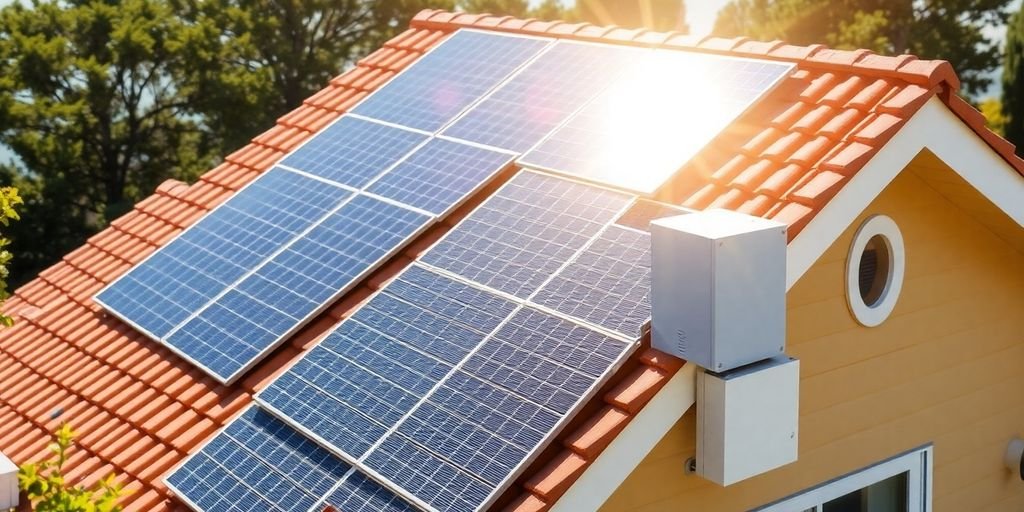
Let’s face it, not everyone has a perfectly angled, south-facing roof with zero obstructions. That’s where the right solar inverter can really shine. Choosing an inverter that can adapt to your specific roof layout is key to maximizing your solar energy production.
Different inverter types offer varying degrees of flexibility when it comes to handling complex roof designs. Some are better suited for dealing with partial shading, multiple roof orientations, or even just odd shapes. It’s all about finding the right fit for your home.
Think of it like this:
- String inverters: Best for simple, uniform roof layouts.
- Microinverters: Ideal for complex roofs with shading or multiple orientations.
- Power optimizers: A good middle ground for some shading issues.
Getting the right inverter for your roof isn’t just about aesthetics; it’s about getting the most bang for your buck. A well-matched inverter can significantly improve your system’s overall performance and energy yield.
22. Support for Multiple Solar Arrays
Having a solar inverter that supports multiple solar arrays can be a game-changer, especially if your roof has different orientations or shading issues. Instead of treating your entire roof as one big solar field, you can divide it into smaller, more manageable sections. This is where inverters with multiple Maximum Power Point Trackers (MPPT) come in handy.
These inverters allow each array to operate at its peak efficiency, regardless of what’s happening on other parts of the roof.
Think of it like this: if one part of your roof is shaded in the morning, it won’t drag down the performance of the panels that are getting full sun. This is a big deal for maximizing your energy production.
Here’s why this is so useful:
- Increased energy yield: By optimizing each array individually, you get more power overall.
- Flexibility in design: You can install panels on different roof sections, even if they face different directions.
- Better shading management: Shaded panels won’t significantly impact the performance of unshaded panels.
Choosing an inverter that supports multiple arrays gives you more control over your solar setup. It’s especially beneficial if you have a complex roof or want to expand your system in the future. It’s all about getting the most out of your solar investment.
For example, microinverters are a great solution for partial shading, offering panel-level optimization and detailed monitoring. String inverters, on the other hand, are cost-effective for large, uniform arrays with consistent sun exposure.
23. Eco-Friendly Energy Production
Choosing the right solar inverter isn’t just about saving money; it’s also a big step towards helping the environment. By converting sunlight into usable electricity, you’re reducing your reliance on fossil fuels, which are a major source of pollution. It’s a win-win!
- Reduced Carbon Footprint: Solar energy is clean energy. Using it means less carbon dioxide being released into the atmosphere.
- Decreased Air Pollution: Traditional power plants emit pollutants that can harm our health. Solar power helps cut down on these emissions.
- Conservation of Natural Resources: Fossil fuels are finite. Solar energy is renewable, meaning it won’s run out.
Switching to solar is like giving the planet a breather. It’s a practical way to make a difference and contribute to a healthier future for everyone. Plus, you get to feel good about doing your part!
24. Increased Property Value
Okay, so you’re thinking about solar, right? Beyond the whole saving-the-planet thing (which is awesome, by the way), let’s talk about something that hits closer to home: your property value. Slapping some solar panels on your roof can actually make your house worth more. It’s not just a feel-good investment; it’s a smart one.
Think about it. Buyers these days are getting smarter. They’re looking at long-term costs, not just the sticker price of a house. A home with a solar system already installed means lower energy bills from day one. That’s a huge selling point. Plus, it signals that the home is modern and energy-efficient. It’s like saying, “Hey, I’ve already taken care of the future for you.”
I remember when my neighbor installed solar. At first, I was skeptical. But when he sold his house for way more than anyone expected, I started paying attention. It wasn’t just the solar, of course, but it definitely played a part. Now, I’m seriously considering it myself.
Here’s a few things to consider:
- Location Matters: In some areas, solar is a bigger deal than others. States with high electricity costs or strong environmental awareness tend to see a bigger boost in property value.
- System Size: A system that covers a significant portion of the home’s energy needs is more attractive than a tiny one that barely makes a dent.
- System Age: Newer systems are generally more appealing. Buyers might be wary of older systems nearing the end of their lifespan.
Installing solar panels can enhance your home’s market value, reduce energy expenses, and increase its attractiveness to potential buyers.
Basically, solar isn’t just about saving money on electricity. It’s about making your home more desirable and valuable in the long run. And who doesn’t want that?
25. Access to Incentives and Rebates and more
Choosing the right solar inverter can open doors to various financial incentives, making your investment even more appealing. These incentives can significantly reduce the upfront costs of your solar installation, and the best part is, there’s usually more than one way to save!
- Federal Tax Credits: The federal government often provides tax credits for solar energy systems. This can be a substantial percentage of the total system cost.
- State and Local Rebates: Many states and local municipalities offer rebates to encourage solar adoption. These rebates can vary widely depending on your location.
- Performance-Based Incentives: Some programs offer incentives based on the actual energy production of your solar system. The more energy you generate, the more you can save.
It’s worth noting that the availability and specifics of these incentives can change, so it’s a good idea to check with your local government and utility companies for the most up-to-date information. Also, a good solar installer will be able to help you navigate solar rebates and incentives.
Beyond the direct financial benefits, a high-quality inverter can also make you eligible for other programs, such as net metering, where you can sell excess energy back to the grid. This not only helps you offset your energy costs but also contributes to a more sustainable energy future. Plus, some utilities offer additional incentives for using specific types of inverters that enhance grid stability. It’s all about making smart choices to maximize your return on investment and contribute to a greener planet. It’s a win-win situation!
Wrapping It Up
Choosing the right solar inverter can significantly impact your energy savings. It’s not just about upfront cost—efficient inverters lower bills and may earn you money through net metering. With options ranging from budget to premium, there’s something for every setup. Consider roof layout, shading, and future expansion. Take your time, research, and consult experts for the best results.
Frequently Asked Questions
What is a solar inverter?
A solar inverter is a device that changes the direct current (DC) energy from your solar panels into alternating current (AC) energy, which is what most home appliances use.
Why do I need a good solar inverter?
A good solar inverter helps you get the most energy from your solar panels, making your system more efficient and saving you money on electricity bills.
How do I choose the right solar inverter for my home?
When picking a solar inverter, consider factors like your budget, the size of your solar system, and whether you want features like monitoring apps.
What are the different types of solar inverters?
There are three main types of solar inverters: string inverters, microinverters, and hybrid inverters, each with its own benefits and uses.
Can I expand my solar system later?
Yes! Many solar inverters are designed to be modular, meaning you can add more panels or batteries later as your energy needs grow.
How long do solar inverters last?
Most solar inverters last between 5 to 15 years, but some high-quality models can last even longer, especially with good maintenance.

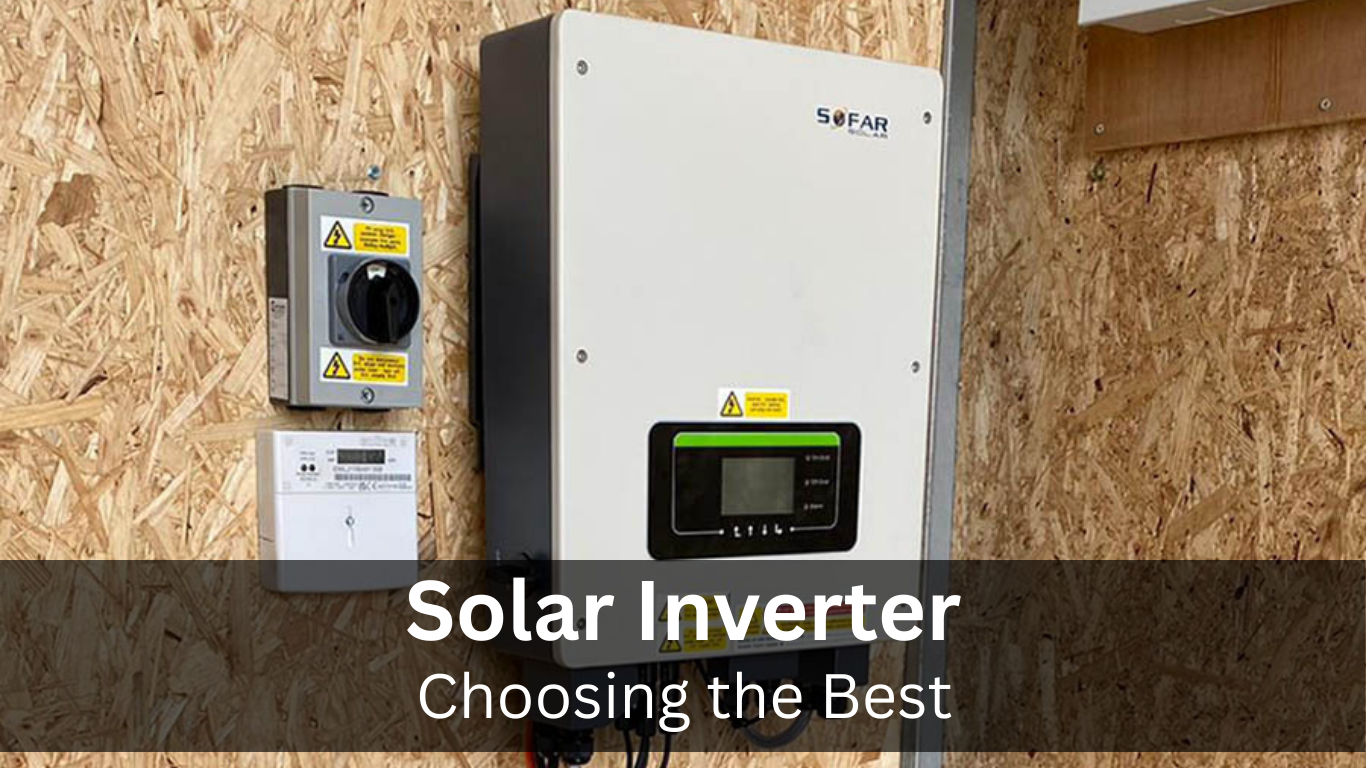

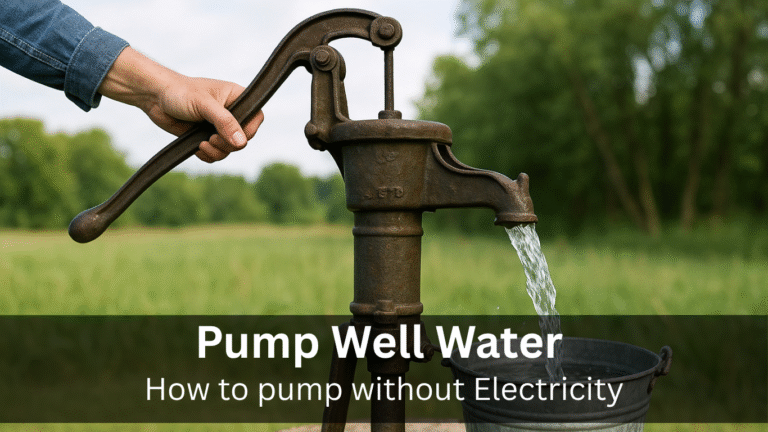
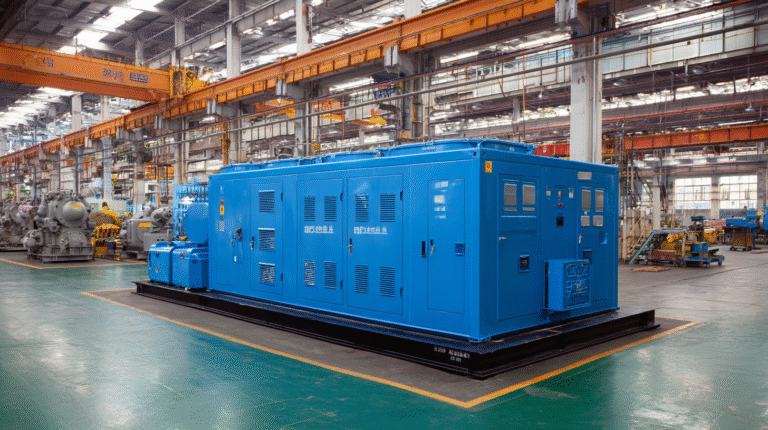
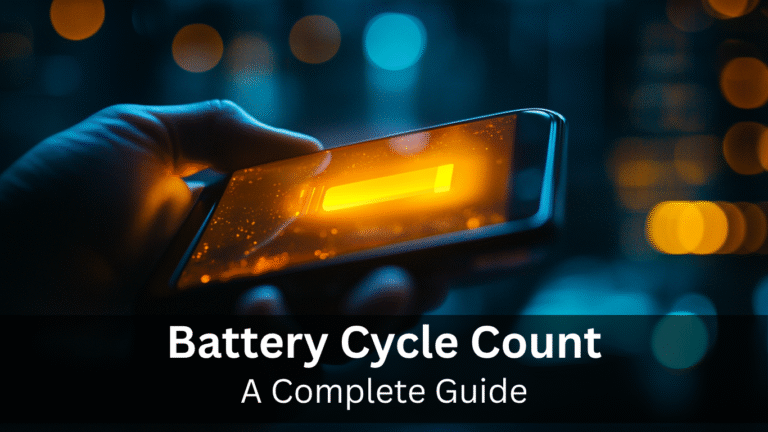



3 Comments